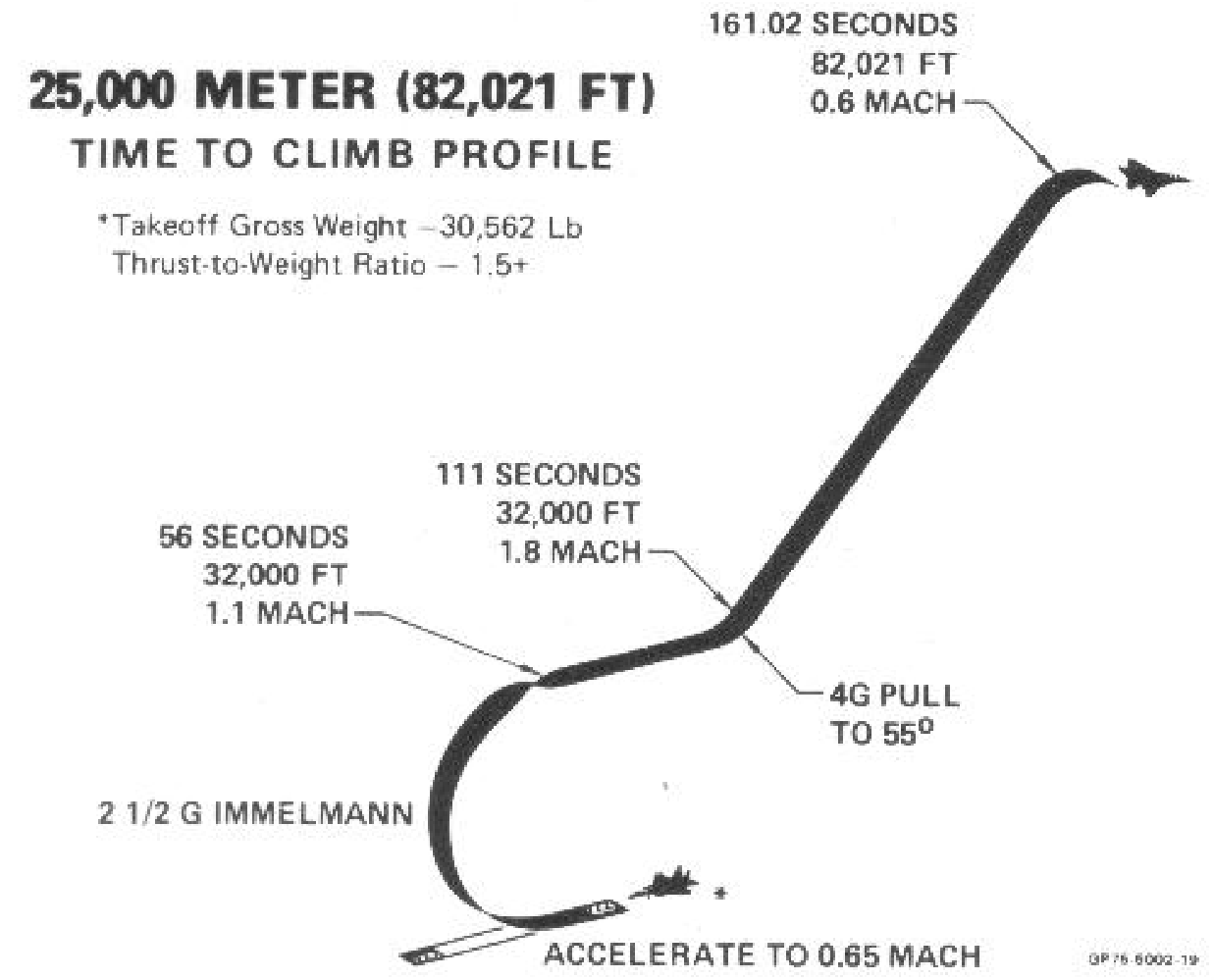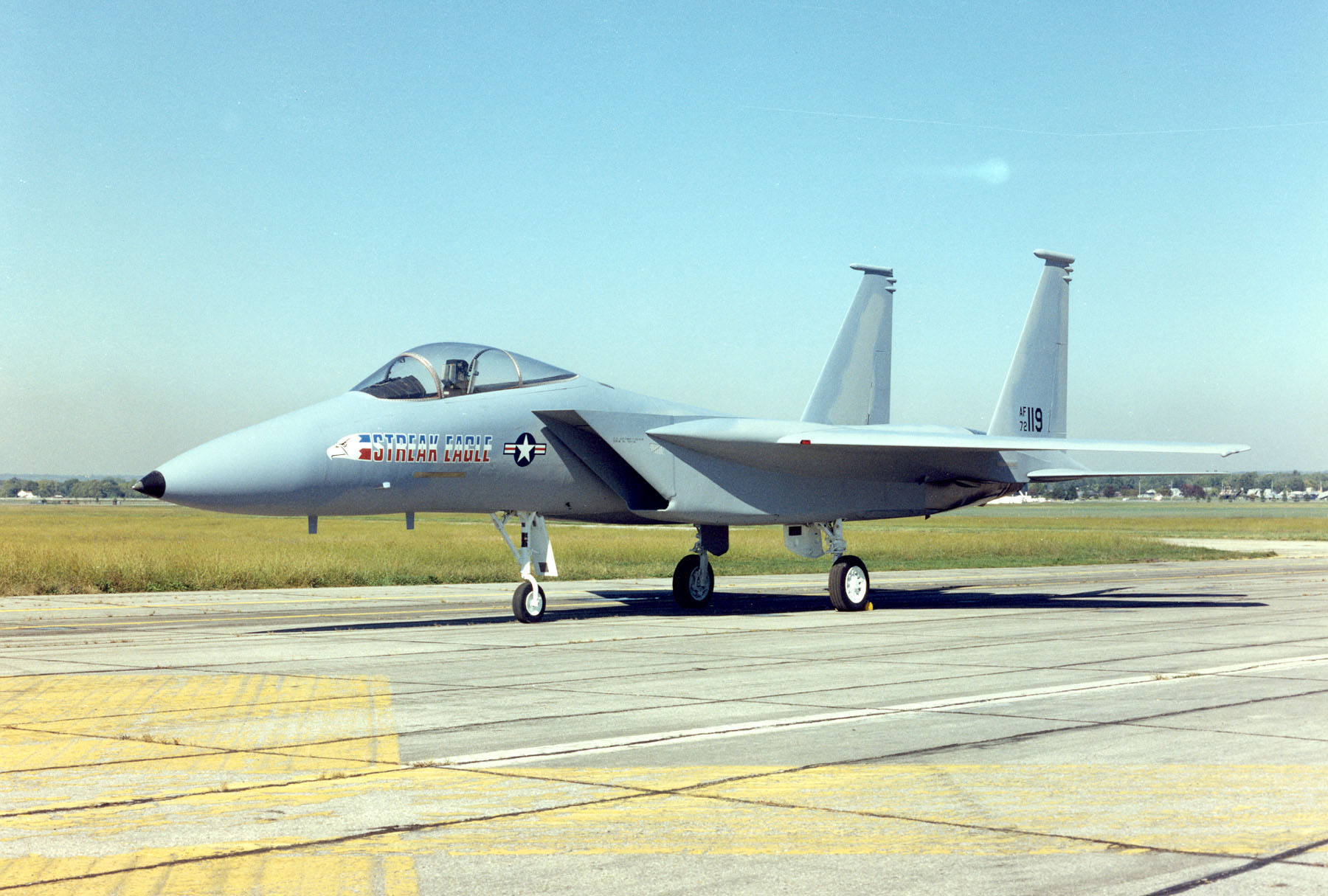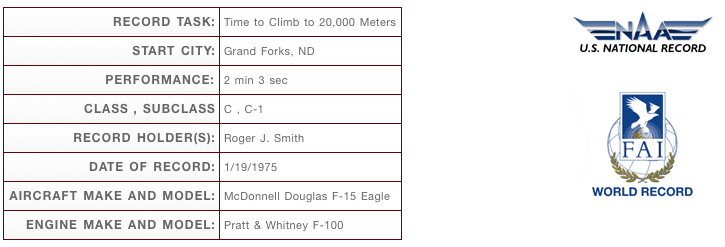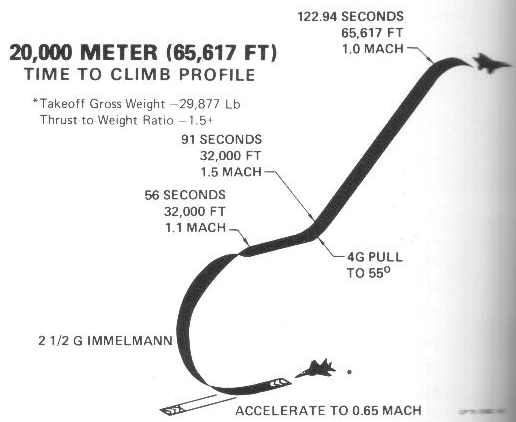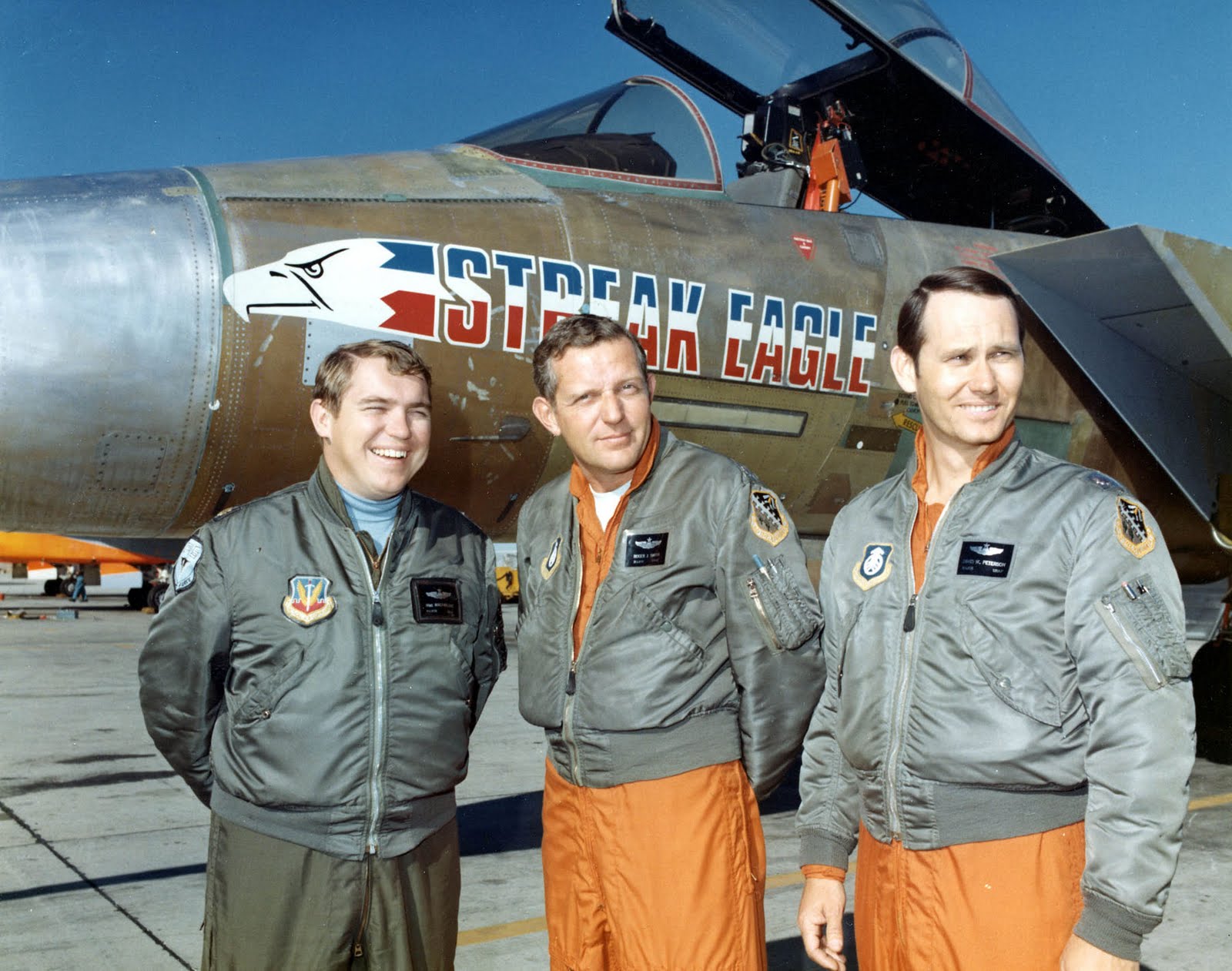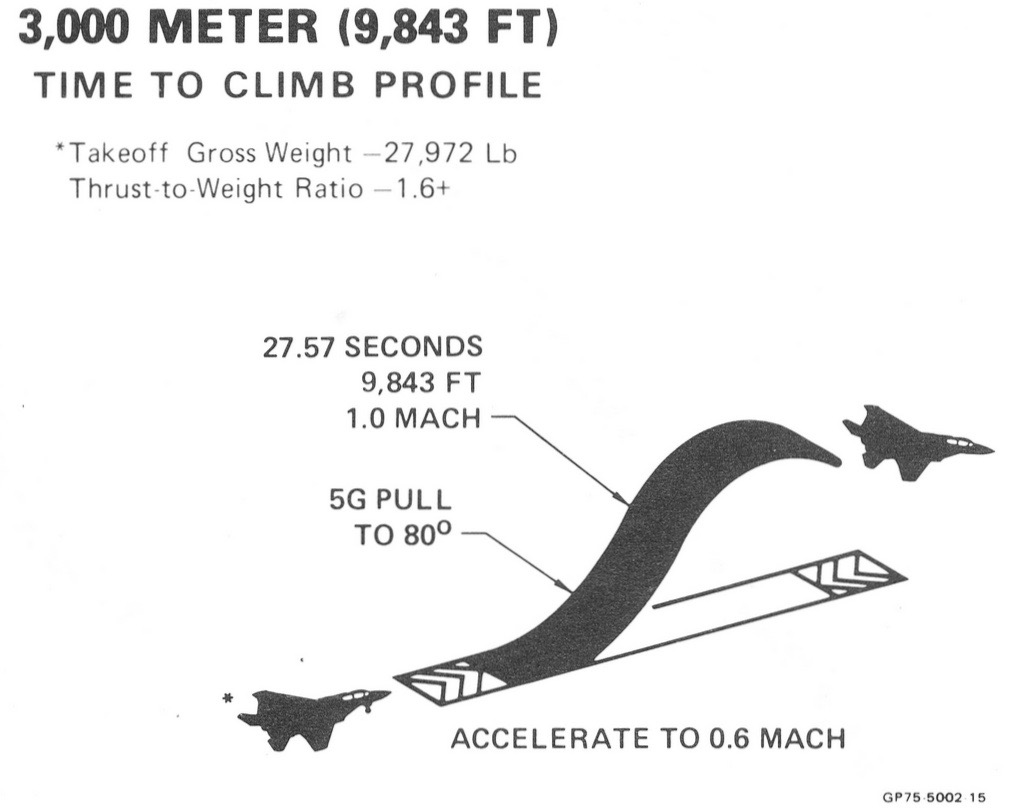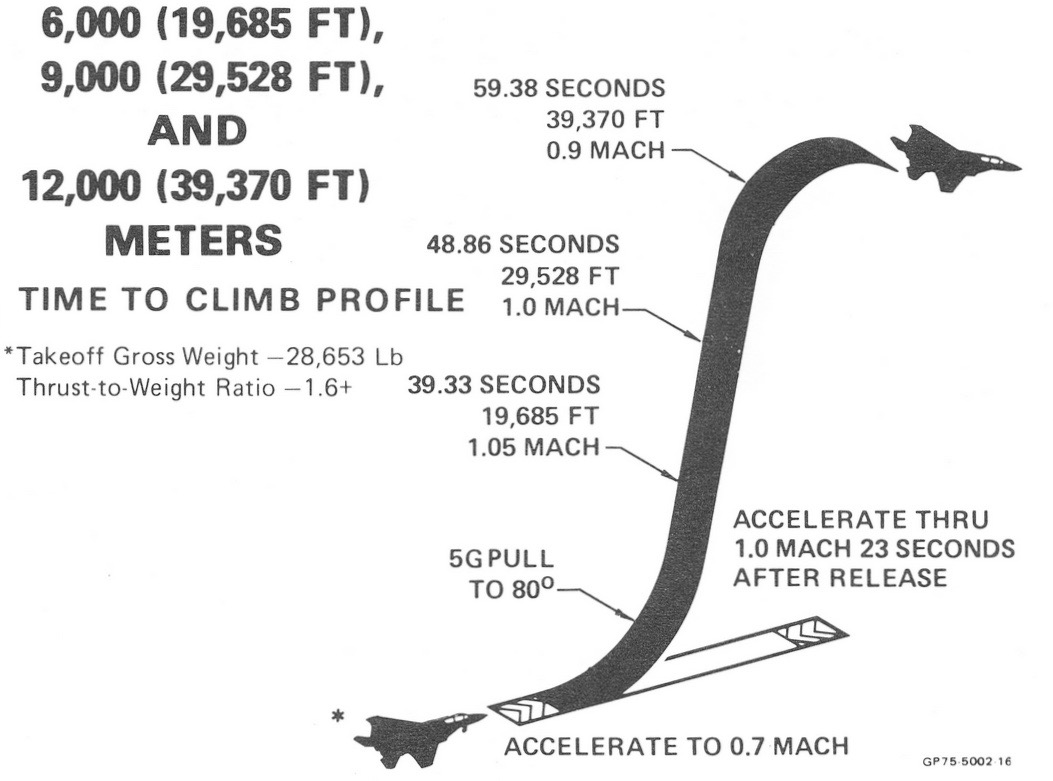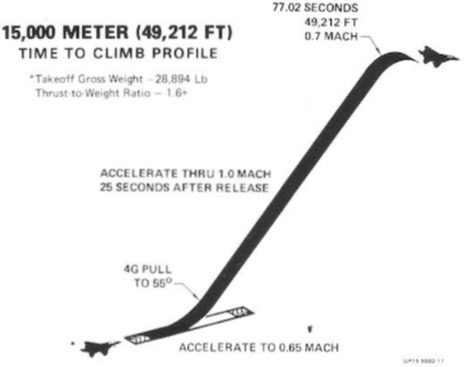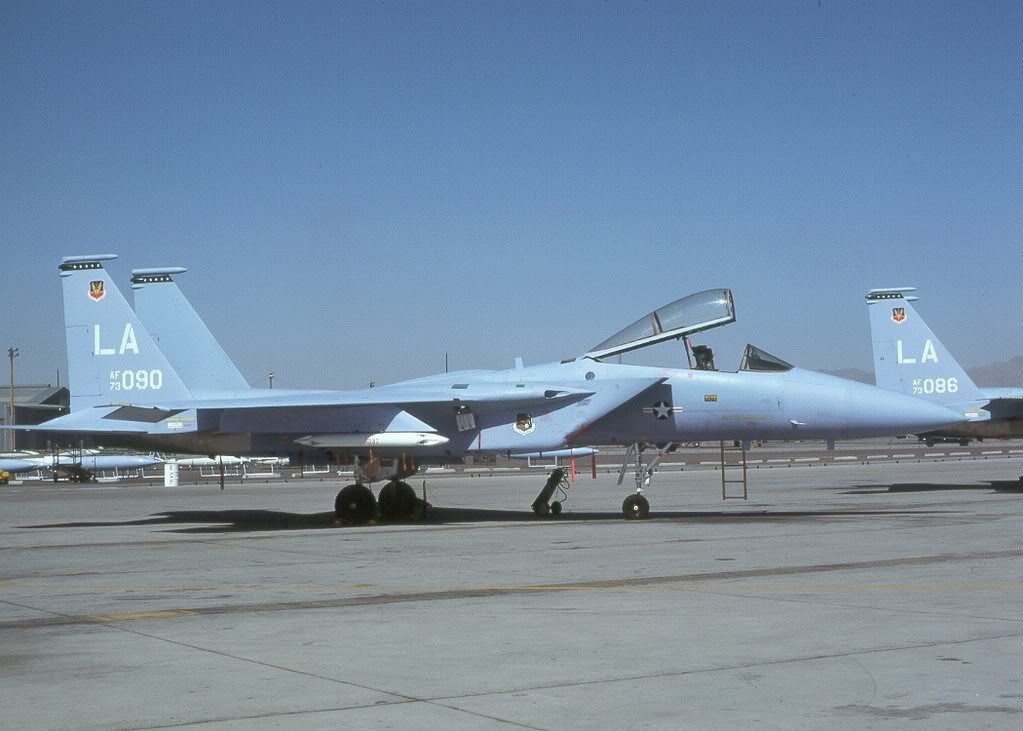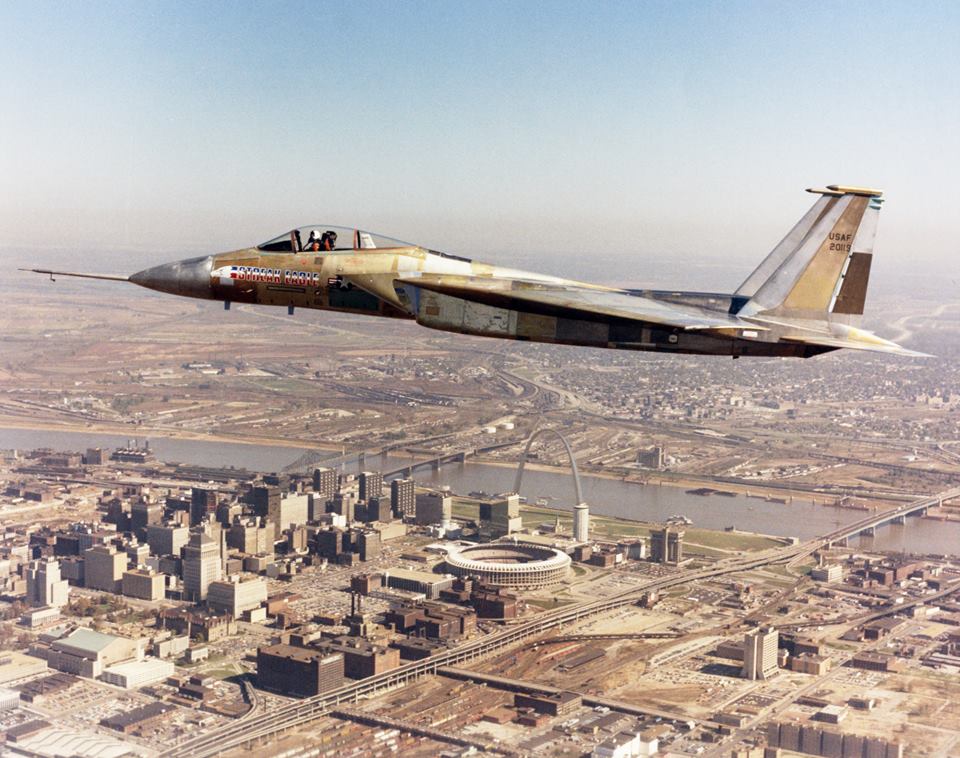
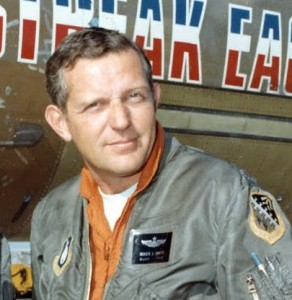
1 February 1975: Major Roger J. Smith, United States Air Force, a test pilot assigned to the F-15 Joint Test Force at Edwards AFB, California, flew the McDonnell Douglas F-15A-6-MC 72-0119, Streak Eagle, to its eighth Fédération Aéronautique Internationale (FAI) and U.S. National Aeronautic Association time-to-altitude record.
From brake release at Grand Forks Air Force Base, North Dakota, at 913 feet (278 meters) above Sea Level, the F-15 reached 30,000 meters (98,425 feet) in 3 minutes, 27.799 seconds.
This was the eighth time-to-altitude record set by Streak Eagle in 17 days.
FAI Record File Num #8520 [Direct Link]
Status: ratified – retired by changes of the sporting code
Region: World
Class: C (Powered Aeroplanes)
Sub-Class: C-1 (Landplanes)
Category: Not applicable
Group: 3 : turbo-jet
Type of record: Time to climb to a height of 30 000 m
Performance: 3 min 27.799s
Date: 1975-02-01
Course/Location: Grand Forks, ND (USA)
Claimant Roger J. Smith (USA)
Aeroplane: McDonnell Douglas F-15
Engines: 2 Pratt & Whitney F-100
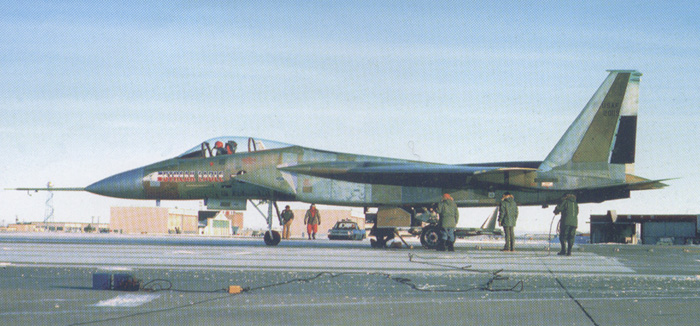
The flight profiles for the record attempts were developed by McDonnell Douglas Chief Developmental Test Pilot, Charles P. “Pete” Garrison (Lieutenant Colonel, U.S. Air Force, Retired).
Streak Eagle carried only enough fuel for each specific flight. It was secured to the hold-back device on the runway and the engines were run up to full afterburner. It was released from the hold-back and was airborne in just three seconds.
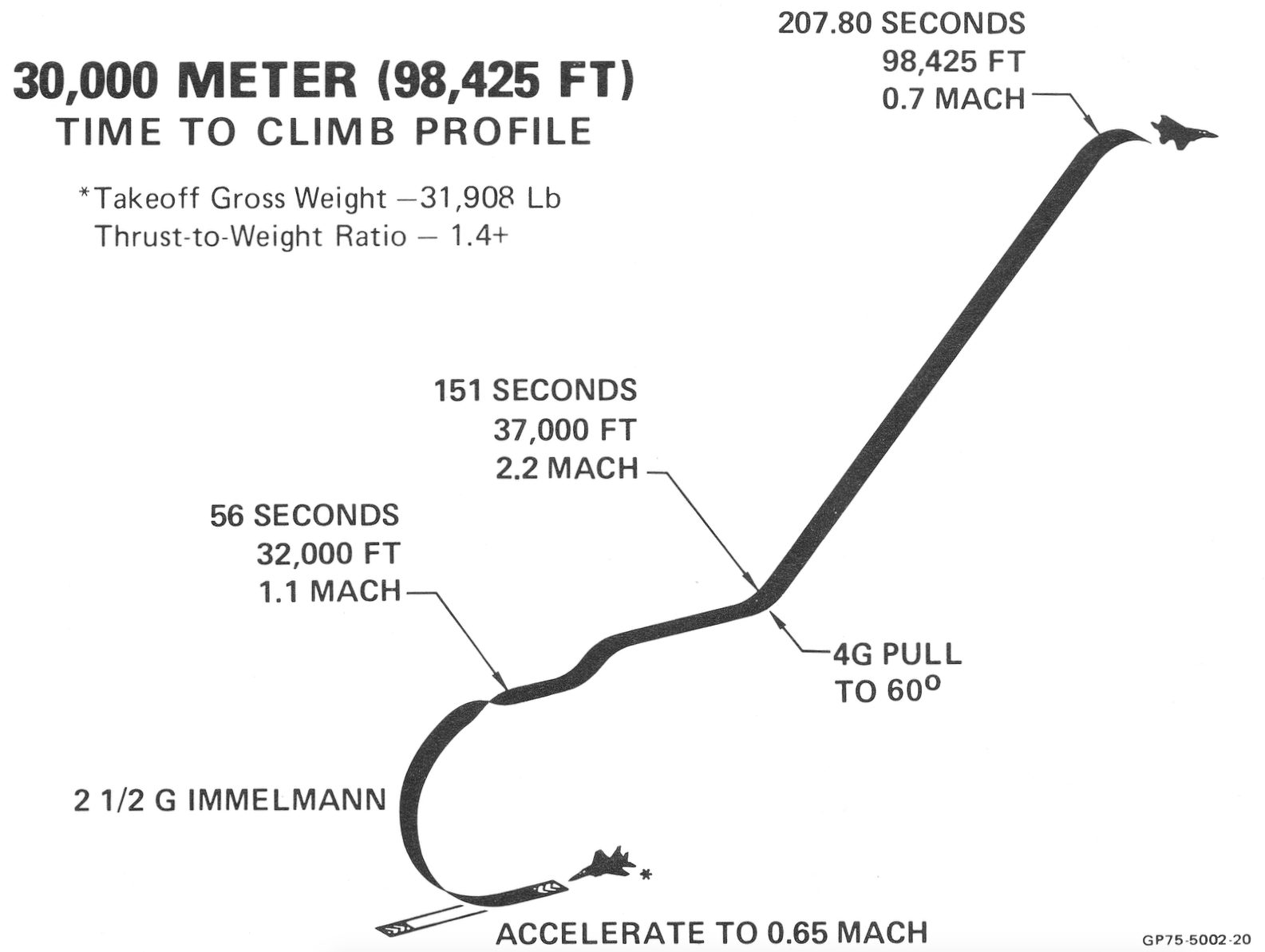
After reaching a peak altitude and slowing to just 55 knots (63 miles per hour, 102 kilometers per hour), the airplane was pushed over into a 55° dive. Once it was below 55,000 feet (16,764 meters) the engines would be restarted and Streak Eagle returned to land at Grand Forks.
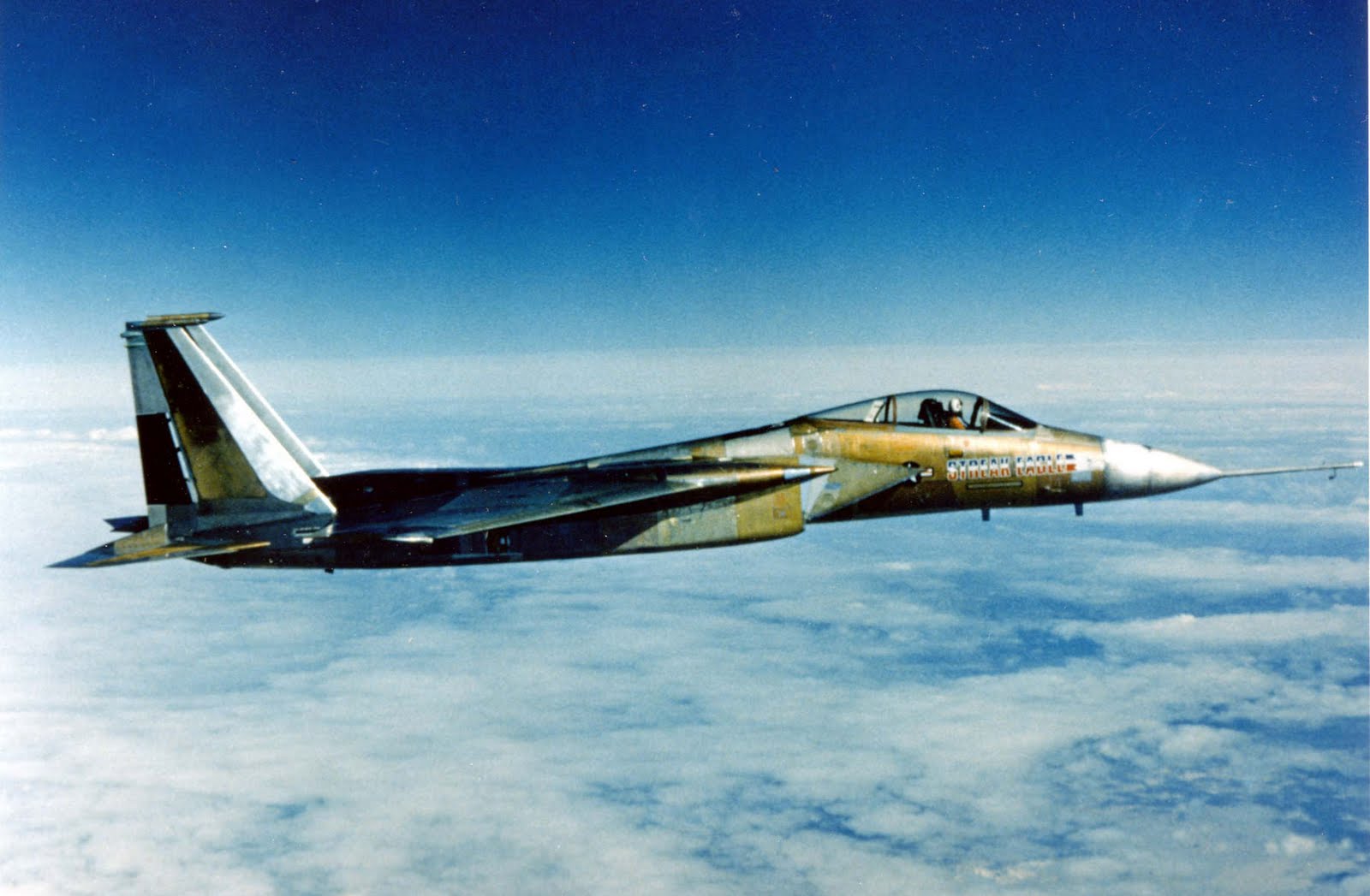


The cruise speed of the F-15A Eagle is 502 knots (578 miles per hour/930 kilometers per hour). It has a maximum speed of 893 knots (1,028 miles per hour/1,654 kilometers per hour) at 10,000 feet (3,048 meters), and 1,434 knots (1,650 miles per hour/2,656 kilometers per hour) at 45,000 feet (13,716 meters). The ceiling is 63,050 feet (19,218 meters) at maximum power. It can climb at an initial 67,250 feet per minute (342 meters per second) from Sea Level, and with a thrust-to-weight ratio of 1.15:1, The F-15 can climb straight up. The Eagle’s combat radius is 638 nautical miles (734 statute miles/1,182kilometers).
The F-15A is armed with one General Electric M61A1 Vulcan 20mm rotary cannon with 938 rounds of ammunition, four AIM-7 Sparrow radar-guided missiles and four AIM-9 Sidewinder heat-seeking missiles.
384 F-15A Eagles were built before production shifted to the improved F-15C version. As F-15Cs became operation, the F-15As were transferred to Air National Guard units assigned to defend continental U.S. airspace. The last F-15A was retired from service in 2009.
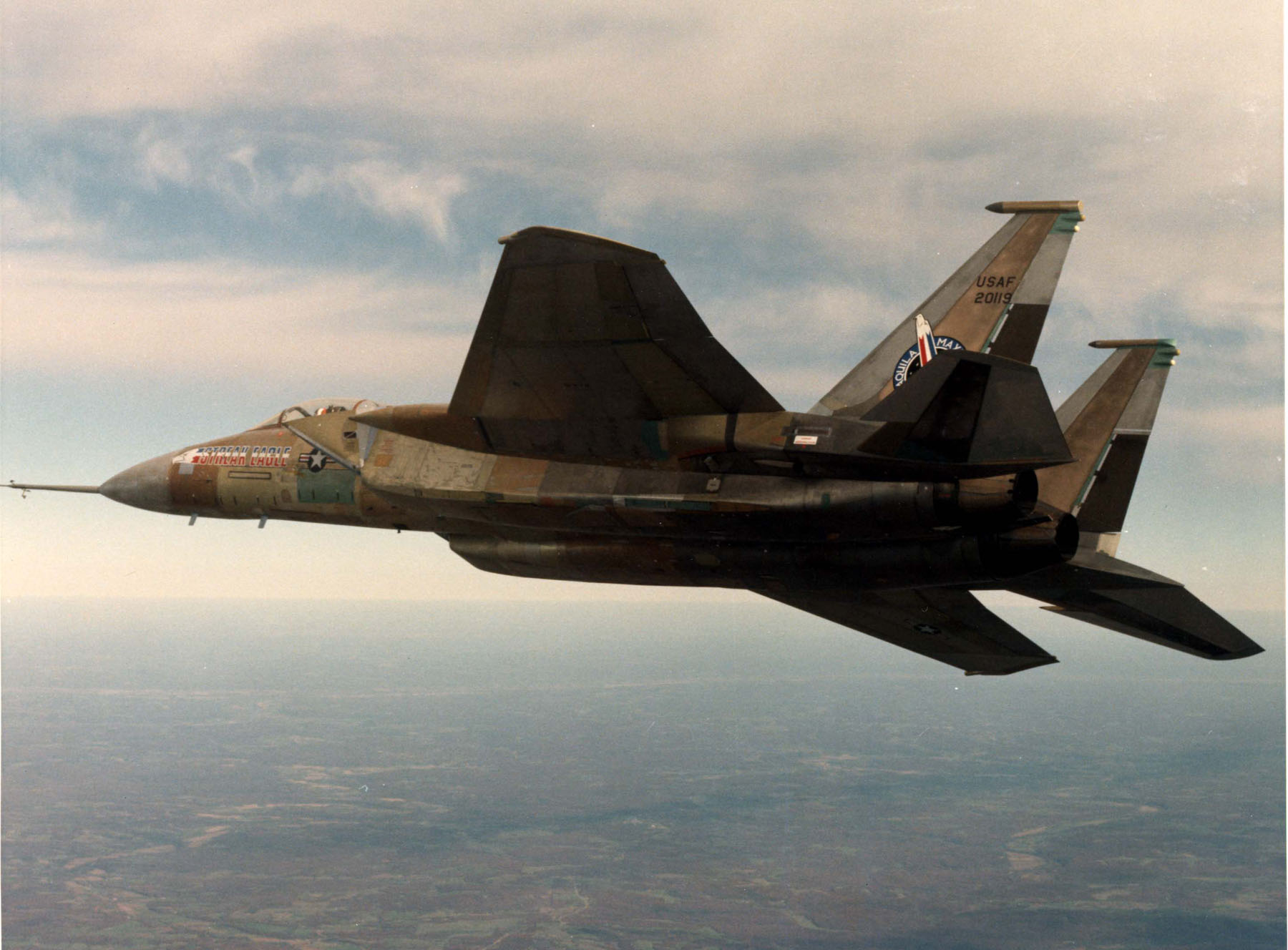

Other equipment was added: A long pitot boom was mounted at the nose with alpha and beta vanes, equipment for the pilot’s David Clark Company A/P-225-6 full pressure suit, extremely sensitive accelerometers and other instrumentation, extra batteries, an in-cockpit video camera aimed over the pilot’s shoulder, and perhaps most important, a special hold-down device was installed in place of the fighter’s standard arresting hook.
These changes resulted in an airplane that was approximately 1,800 pounds (817 kilograms) lighter than the standard production F-15A. This gave it a thrust-to-weight ratio of 1.4:1.
Because Streak Eagle was a very early production airplane its internal structure was weaker than the final production F-15A standard. It was considered too expensive to modify it to the new standard, so it was transferred to the National Museum of the United States Air Force at Wright-Patterson Air Force Base, Ohio, in December 1980.
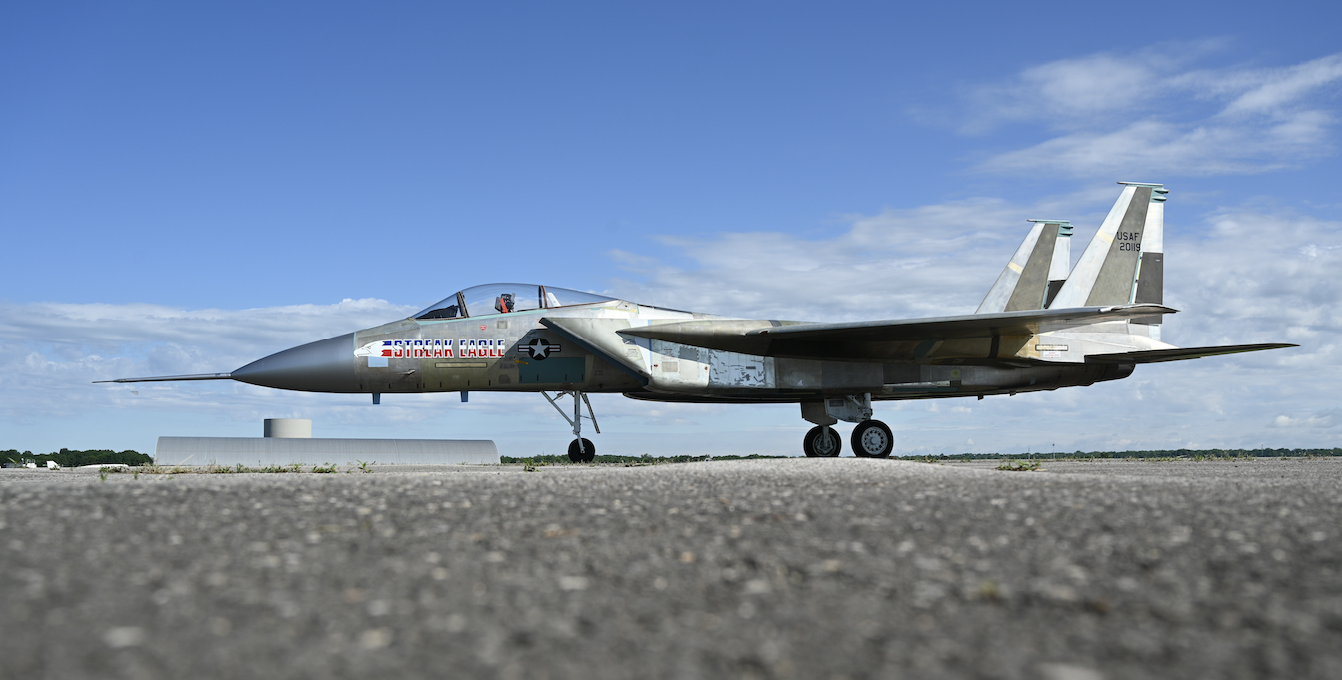

Roger Jameson Smith was born 26 January 1935 at Fostoria, Ohio. He was the son of Ruland Leslie Smith, an illuminating engineer for a glass works, and Frances Victora Shaw Smith. He attended Newark High School, Newark, Ohio, graduating in 1953.
Following high school, Smith studied at Ohio State University. He was a member of the Reserve Officers Training Corps (R.O.T.C.), the Alpha Tau Omega (ΑΤΩ) fraternity, Pi Tau Sigma (ΠΤΣ) and the Tau Beta Pi (ΤΒΠ) engineering honor societies. He graduated in 1958 with a degree in mechanical engineering. He later earned a masters degree from the University of Southern California.
Roger Smith was commissioned as a second lieutenant in the United States Air Force Reserve in October 1958. He then trained as a pilot.

Second Lieutenant Roger Jameson Smith married Miss Marilyn Ann Dickey at 6:30 p.m., Saturday, 6 June 1959, Weaver Memorial Chapel at Wittenberg College, Springfield, Ohio. The ceremony was presided over by Rev. Dr. Edgar F. Drumel. They would eventually have three children.
Smith deployed to Germany for two operational tours. He served in Southeast Asia during the Vietnam War. In 1967, he flew 75 combat missions from Bien Hoa Air Base, Republic of South Vietnam, in the Cessna A-37 Dragonfly, then 128 missions in the Republic F-105D Thunderchief from Takhli Royal Thai Air Force Base, Thailand.
Smith graduated from the U.S. Air Force Aerospace Research Test Pilot School at Edwards Air Force Base in California. He also attended the United States Naval War College.
Roger J. Smith retired from the United States Air Force in 1984. He had flown more than 5,000 hours, and had been awarded the Distinguished Flying Cross, Bronze Star, and ten Air Medals. For his flights in Streak Eagle, Smith was awarded the Mackay Trophy.
Colonel Roger Jameson Smith, U.S. Air Force (Retired) died 24 April 2021 at the age of 86 years. His remains were interred at the Jacksonville National Cemetery, Jacksonville, Florida.
© 2025, Bryan R. Swopes



